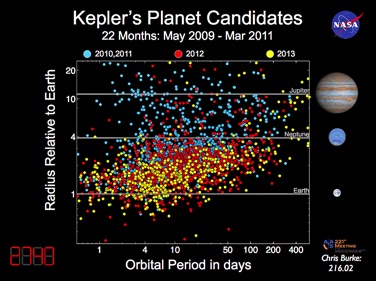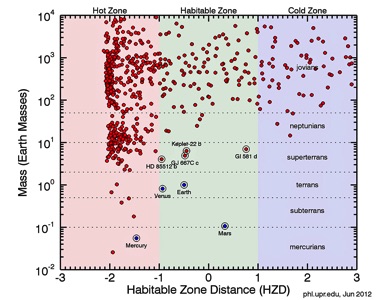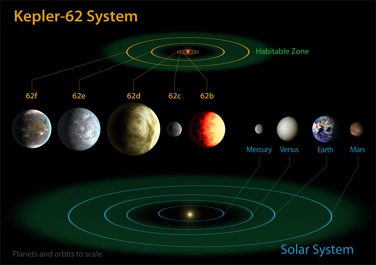The existence of hundreds and hundreds of exoplanets has been confirmed over the last few decades. These exoplanets range in size from Earth-size to exoplanets that are much larger in size than Jupiter. These exoplanets also have surface temperatures that range from quite low to extremely high. The exoplanet currently in the main view panel, HIP98505 b, for example, has an average dayside temperature of 1,205° K (932° C or 1,710° F). The rapidly increasing number of exoplanet discoveries, along with the large variability in size and surface temperature of these exoplanets, has necessitated the implementation of coherent cataloging systems in order to deal with the large amounts of exoplanetary data.
One widely used system of cataloging exoplanets is known as the Planetary Class or pClass system. The pClass system of planetary classification catalogs exoplanets by using a combination of temperature and mass categories. The temperature category consists of three thermal zones: hot, warm, and cold. The warm zone corresponds to the habitable zone. The mass category has seven possible levels as outlined in the following chart.
| pClass (mass designation) |
Mass Range (MEarth) |
Description |
| Asteroidan | 0–10-5 | Small irregular bodies |
| Mercurian | 10-5–0.1 | Mercury-sized bodies |
| Subterran | 0.1–0.5 | Mars-sized bodies |
| Terran | 0.5–2 | Earth-sized bodies |
| Superterran | 2–10 | Low multiples of Earth-sized bodies |
| Neptunian | 10–20 | Neptune-sized bodies |
| Jovian | > 50 | Jupiter-sized bodies |
It is the combination of thermal zone and mass range that determines the pClass designation for an exoplanet.
Naming Convention
Exoplanets are named by taking the naming of the parent star and then adding a lower case letter. The first exoplanet discovered for that star is given the letter b, the second exoplanet discovered c, and so on. The Kepler-62 system represents a solar system in which all of the exoplanets were discovered in sequential order from the central star out. However, the Kepler-82 solar system represents a system in which the exoplanets are not named in sequential order from the central star. The non-sequential order is due to the different discovery dates of the individual exoplanets of Kepler-82.


